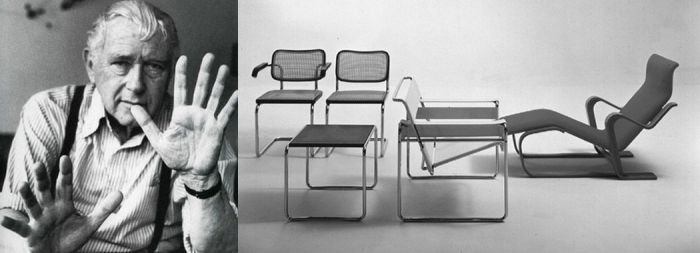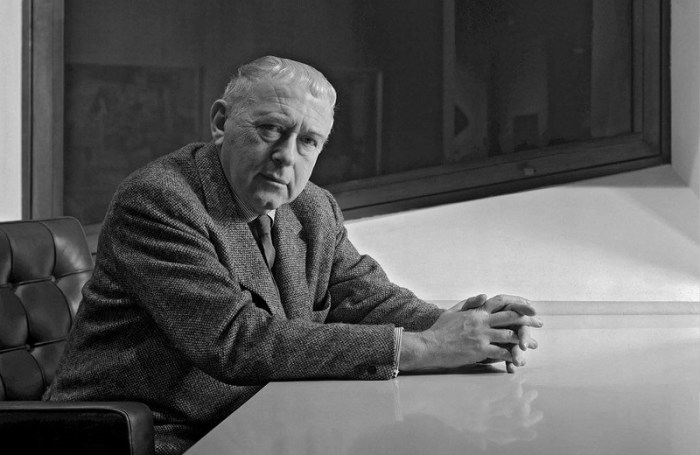Exploring the Impact of Marcel Breuer in Art and Design
With Marcel Breuer as the focal point, this paragraph sets the stage for a captivating exploration into his life, work, and lasting influence on art and design.
Delve into his early beginnings, architectural marvels, and innovative furniture designs that have shaped the modern landscape.
Biography of Marcel Breuer
Marcel Breuer, born on May 21, 1902, in Hungary, showed an early interest in art and design. He studied at the Vienna Academy of Fine Arts and later joined the Bauhaus school in Weimar, where he became a prominent figure in the modernist movement.
Early Life and Education
Marcel Breuer's passion for design led him to study at the Vienna Academy of Fine Arts, where he honed his skills in architecture and furniture design. His time at the Bauhaus school further shaped his design philosophy, emphasizing the marriage of form and function in his creations.
Career Highlights and Contributions
Throughout his career, Marcel Breuer made significant contributions to art and design. He is best known for his innovative use of materials, particularly in his furniture designs. His iconic Wassily Chair and Cesca Chair are timeless examples of modernist furniture that blend style with practicality.
Impact on Modernist Architecture and Furniture Design
Marcel Breuer's influence on modernist architecture and furniture design is profound. His sleek, minimalist designs challenged traditional notions of form and structure, paving the way for the modernist movement. Breuer's architectural works, such as the UNESCO headquarters in Paris and the Whitney Museum of American Art in New York, continue to inspire architects and designers around the world.
Architectural Style of Marcel Breuer

Marcel Breuer was known for his innovative architectural style that combined elements of modernism with his own unique approach. His designs often featured a focus on functionality, geometric shapes, and the innovative use of materials.
Characteristics of Marcel Breuer’s Architectural Style
- Strong geometric forms: Breuer's buildings often featured bold geometric shapes, such as cubes, cylinders, and cantilevered structures.
- Use of industrial materials: He was known for incorporating materials like steel, concrete, and glass into his designs, showcasing a modern and industrial aesthetic.
- Open floor plans: Breuer's buildings often had open, flowing spaces that allowed for flexibility and a sense of openness.
- Integration with nature: While his designs were often modern and geometric, Breuer also emphasized the connection between his buildings and the natural environment.
Examples of Famous Buildings Designed by Marcel Breuer
- The Whitney Museum of American Art in New York City: This iconic building showcases Breuer's use of concrete and geometric shapes, creating a striking presence in the city.
- The UNESCO Headquarters in Paris: Breuer's design for this building exemplifies his modernist approach with its use of glass and steel, reflecting the organization's ideals of unity and collaboration.
- The St. John's Abbey Church in Collegeville, Minnesota: This architectural masterpiece showcases Breuer's innovative use of concrete and dramatic forms, creating a serene and contemplative space.
Influence of Bauhaus on Marcel Breuer’s Architectural Designs
As a former student and later a master at the Bauhaus school, Marcel Breuer was heavily influenced by its principles of combining art and craftsmanship with modern technology. This influence can be seen in his minimalist designs, emphasis on functionality, and use of industrial materials.
Breuer's time at Bauhaus played a significant role in shaping his architectural style and approach to design.
Furniture Design by Marcel Breuer

Marcel Breuer, known for his innovative architectural designs, also made significant contributions to furniture design. His approach to furniture design was characterized by a focus on simplicity, functionality, and the innovative use of materials.
Materials and Techniques Used
Marcel Breuer often utilized tubular steel in his furniture pieces, a material that was not commonly associated with furniture design at the time. This allowed him to create pieces that were both lightweight and structurally sound. Breuer also incorporated materials such as wood and leather into his designs, combining traditional craftsmanship with modern industrial techniques.
Comparison to Other Designers
- Le Corbusier: While both Breuer and Le Corbusier were pioneers of modern design, Breuer's furniture pieces often had a more streamlined and minimalist aesthetic compared to Le Corbusier's more sculptural approach.
- Ludwig Mies van der Rohe: Breuer's use of tubular steel in furniture design was also a departure from Mies van der Rohe's more rigid and rectilinear designs. Breuer's pieces had a sense of fluidity and movement that set them apart.
- Charlotte Perriand: Breuer's furniture designs shared a similar emphasis on functionality and practicality with Perriand's work. Both designers prioritized the user experience and the relationship between form and function in their creations.
Legacy of Marcel Breuer
Marcel Breuer's impact on contemporary architecture and design continues to resonate to this day, shaping the way we think about space, form, and materials.
Influence on Future Generations
Marcel Breuer's innovative designs have served as a source of inspiration for countless architects and designers who have followed in his footsteps. His groundbreaking use of materials such as concrete and steel in architectural structures has paved the way for experimentation and creativity in modern design.
Preservation and Restoration of Structures
The significance of preserving and restoring Marcel Breuer's structures and furniture lies in their historical and architectural value. These iconic pieces serve as a tangible link to the past, allowing us to appreciate and learn from Breuer's design principles and techniques.
Final Review

In conclusion, Marcel Breuer's legacy continues to shape the world of architecture and design, inspiring future generations with his groundbreaking vision and timeless creations.
Helpful Answers
What materials did Marcel Breuer commonly use in his furniture designs?
Marcel Breuer often utilized tubular steel, leather, and wood in his furniture pieces.
How did Marcel Breuer's work impact future architects and designers?
His innovative designs and architectural principles have influenced generations of creatives, setting new standards in the field.
What are some famous buildings designed by Marcel Breuer?
Notable examples include the UNESCO headquarters in Paris and the Whitney Museum of American Art in New York.




